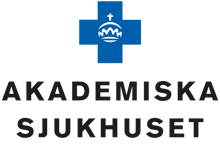Bacteriophages as treatment for prosthetic infections

A completely new treatment method for prosthetic infections is 'phages'. Phages are bacteria-killing viruses that can break through biofilm, and are seen as a promising complement to antibiotics and surgery.
A biofilm is an aggregate or cluster of microorganisms, such as bacteria, that collectively form a protective film where bacteria can cooperate. Biofilms can also form on orthopedic implants if bacteria have managed to get there, and our immune system has difficulty protecting, for example, prostheses from bacteria and their biofilms. Bacteria that form a biofilm exchange signals with each other to coordinate biofilm production. Once a biofilm is formed, the bacteria's sensitivity to antibiotics is greatly reduced - up to 1,000-fold! The most common bacteria that form biofilms in prosthetic infections are staphylococci, streptococci, enterococci and pseudomonas.
The formation of a biofilm goes through several phases, the final stage of which is the formation of a abscess-like structure that then dissolves and spreads - a so-called dispersion occurs. In the early stages of a prosthetic infection, bacteria can still be washed away together with the still immature biofilm, but in the later stages when the biofilm has matured, the implant itself must be removed to rid the patient of the prosthetic infection.
A completely new treatment method for prosthetic infections is 'phages'. Phages* are bacteria-killing viruses that can break through biofilm, and are seen as a promising complement to antibiotics and surgery. Prof. Nils Hailer's group at Uppsala University Hospital has treated Sweden's first patient with phages, after individual approval from the Swedish Medical Products Agency and with phages obtained from a French company. There is still only this one case with individual approval from the Medical Products Agency.
There is currently phage treatment against prosthetic infections caused by staphylococci or pseudomonas, but phage treatments against several other types of bacteria is needed. The aim is to be able to make individualized treatment with screening of agents to be able to match against specific phages. To find the 'right' phage, it may be necessary to test 10,000s of phages to find 1-2 that have activity against the bacterium in question. This requires a large phage library to compare with - something there are few of today. The largest phage library in Europe is currently located in France. Nils Hailer and his group intend to start a project to identify patients on a larger scale who could be helped by phages targeting staphylococci or pseudomonas and then systematically evaluate the treatment results. An important step is to screen bacteria before phage treatment and, after any relapse, to investigate whether phage DNA has been incorporated into the bacteria, or whether resistance mechanisms have developed. Nils Hailer explains: "Phages are quite easy to isolate, but it is more difficult to find phages with sufficient activity against the specific type of bacteria you want to treat, and even more difficult to manage the regulatory requirements for this type of individualized ATMP treatment." Phage therapy is carried out in close collaboration with the infectious disease clinic and microbiologists.
* Note that bacteriophages are not always classified as ATMPs.
